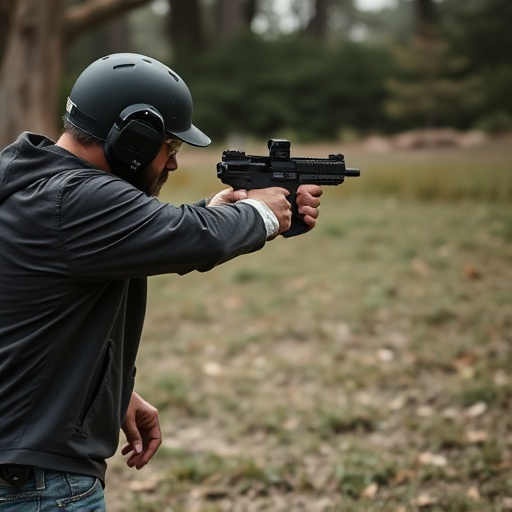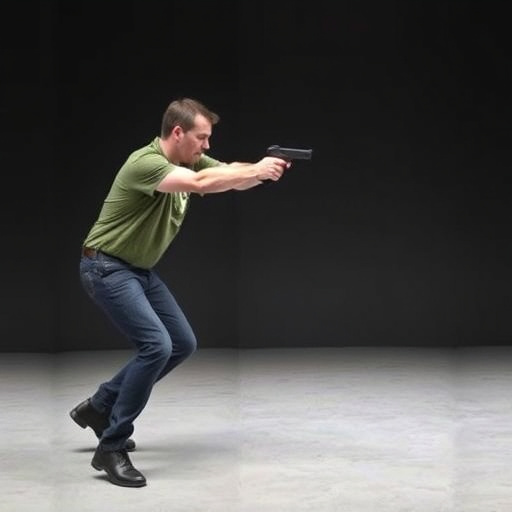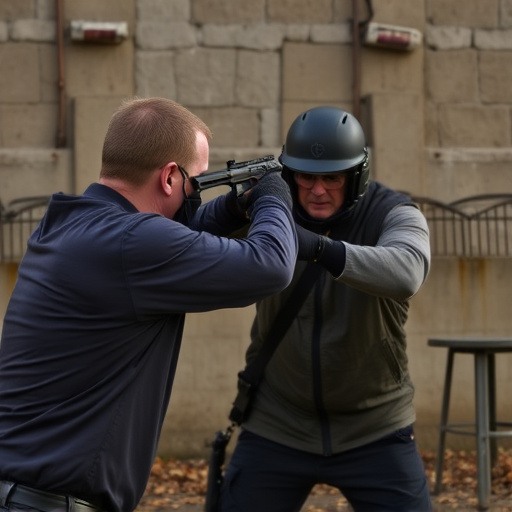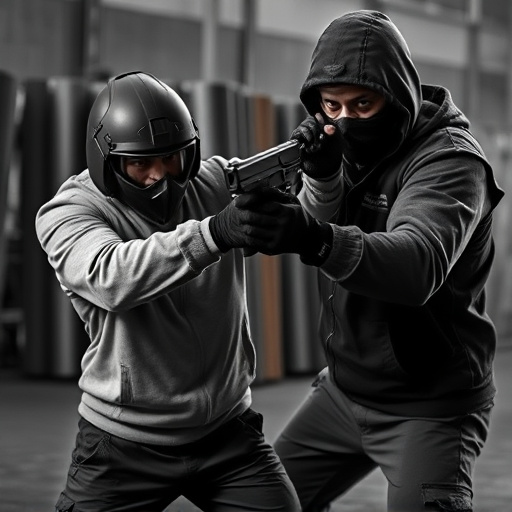Choosing a stun gun involves balancing voltage (10,000-15,000V for general use), safety features, brand reputation, and budget. Higher voltages aren't always better; lower-end models reach up to 700,000V, mid-range offer 1-1.5 million V, and high-end surpass 2 million V. Legality varies by jurisdiction, with voltage thresholds like 1.2 million V in the U.S. Understanding price ranges and specific features ensures optimal performance and safety without exceeding legal limits.
“Unveiling the intricacies of stun gun voltage is paramount for safety and effective self-defense. This comprehensive guide explores the critical relationship between voltage and stun gun performance, helping users navigate the market with informed decisions. We delve into how voltage influences both stun gun effectiveness and pricing, offering insights on identifying quality models within various price ranges. By understanding the safe voltage spectrum, individuals can ensure their safety while selecting a reliable stun device.”
- Understanding Stun Gun Voltage: What It Means for Safety
- Factors Influencing Stun Gun Price and Quality
- Defining a Safe Voltage Range for Stun Guns
- The Impact of Voltage on Stun Gun Effectiveness
- Legal Considerations: Voltage Limits and Regulations
- Choosing the Right Stun Gun: Balancing Price, Quality, and Safety Features
Understanding Stun Gun Voltage: What It Means for Safety

Stun gun voltage refers to the electrical force delivered by the device, measured in volts (V). This specification is crucial when considering safety and effectiveness as it determines how powerful the stun will be. A higher voltage doesn’t always mean better; it must be balanced with the user’s needs and safety considerations. For instance, a stun gun with a voltage range of 10,000 to 15,000 V is typical for personal defense devices targeted at general use.
Choosing a quality stun gun within a reasonable price range ensures both optimal performance and safety features. Beyond voltage, look for other safety specs like automatic shut-off mechanisms after activation and built-in safety switches that prevent accidental discharge. These features, coupled with proper training in usage, can ensure the safe deployment of a stun gun in emergencies while minimizing risks associated with its use.
Factors Influencing Stun Gun Price and Quality

The price range for quality stun guns can vary greatly, influenced by several key factors. One of the primary considerations is the voltage output. Stun guns with higher voltage generally cost more due to the advanced technology and powerful electrical components required to achieve and maintain that level of jolting power. Safety features also play a significant role; advanced safety mechanisms like automated shut-off switches, durable designs, and impact-resistant casings can elevate a stun gun’s price point.
Additionally, brand reputation and marketing strategies significantly impact pricing. Established brands known for their reliability and innovative design often command higher prices. The availability of various features, such as different lighting options, multiple settings, or sleek and ergonomic designs, can further drive up the cost. Moreover, regional differences in market demand and import/export taxes can contribute to variances in price ranges for quality stun guns across different areas.
Defining a Safe Voltage Range for Stun Guns

Defining a safe voltage range for stun guns is crucial, as it ensures both effectiveness and user safety. Stun guns, also known as electric pulse weapons, operate by delivering an electric shock to temporarily incapacitate a target. The key parameter in this process is voltage—the force behind the electrical discharge.
For quality stun guns, the price range often corresponds with specific voltage capabilities. While lower-end models might top out at 700,000 volts, mid-range devices typically offer a more robust performance between 1,000,000 and 1,500,000 volts. High-end stun guns can reach voltages exceeding 2,000,000 volts, ensuring their effectiveness against even the most resistant individuals. It’s important for users to choose a stun gun that falls within a safe voltage range suitable for their needs and level of training, balancing power with minimal risk of accidental harm or excessive use.
The Impact of Voltage on Stun Gun Effectiveness

The effectiveness of a stun gun is directly linked to its voltage output, which plays a crucial role in neutralizing an attacker. In general, higher voltage means a more powerful stun, capable of temporarily incapacitating an individual with a single shot. However, it’s not just about strength; the price range for quality stun guns also determines the specific features and safety specs they come with.
Within the same voltage range, different models may offer varying levels of safety mechanisms to prevent accidental activation or misuse. These include features like adjustable output settings, built-in safety switches, and customizable activation triggers. Understanding these variables is essential when considering a stun gun purchase, as choosing one that aligns with your needs and budget ensures both maximum effectiveness in self-defense situations and the best possible safety features.
Legal Considerations: Voltage Limits and Regulations

In many jurisdictions, the legal considerations surrounding stun guns are closely tied to their voltage output. While stun guns are generally designed to incapacitate individuals temporarily, the power they use is regulated to ensure public safety. The voltage limits vary across regions, but most countries set a maximum threshold for safe usage. For example, in the United States, stun guns are typically restricted to outputs between 500,000 and 1,200,000 volts, with some states having even stricter guidelines. These regulations aim to balance personal protection with preventing harm to bystanders.
When considering a purchase, it’s essential to research the legal framework in your area before settling on a price range for quality stun guns. The market offers a variety of options within different voltage ranges, catering to specific legal requirements. Staying informed about these regulations not only ensures compliance but also helps you make an informed decision when investing in self-defense equipment, keeping in mind that the right stun gun should offer both effectiveness and safety within legal boundaries.
Choosing the Right Stun Gun: Balancing Price, Quality, and Safety Features

Choosing a stun gun involves striking a delicate balance between affordability, reliability, and safety features. The price range for quality stun guns typically varies, offering options from budget-friendly models to high-end devices. While a lower price point can be appealing, it’s crucial to ensure that the device meets safety standards and has sufficient voltage to deter potential attackers effectively.
At the higher end of the spectrum, stun guns may come equipped with advanced features like LED lights, multiple settings for varying threats, and durable construction. These add-ons enhance functionality but also contribute to a higher price tag. Therefore, it’s essential to assess your needs, budget, and the specific risks you face when selecting a stun gun within your price range for quality stun guns.
When considering a stun gun, understanding the voltage range within which it operates is paramount. A quality stun gun should deliver a safe but effective jolt, typically ranging from 5 to 12 million volts. This voltage window ensures optimal effectiveness while maintaining safety for users and bystanders alike. Factors like material quality and design play a significant role in determining price, highlighting the need to balance cost with safety features. Legal regulations also govern stun gun voltage, dictating limits that vary by region. By adhering to these guidelines, consumers can make informed choices, ensuring they acquire a reliable stun gun within their preferred price range for quality assurance.
